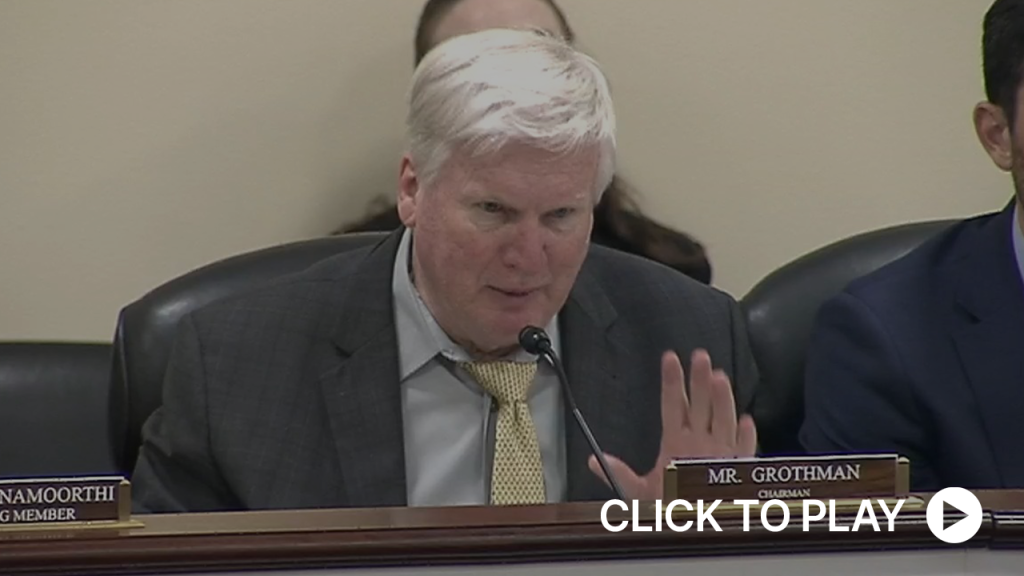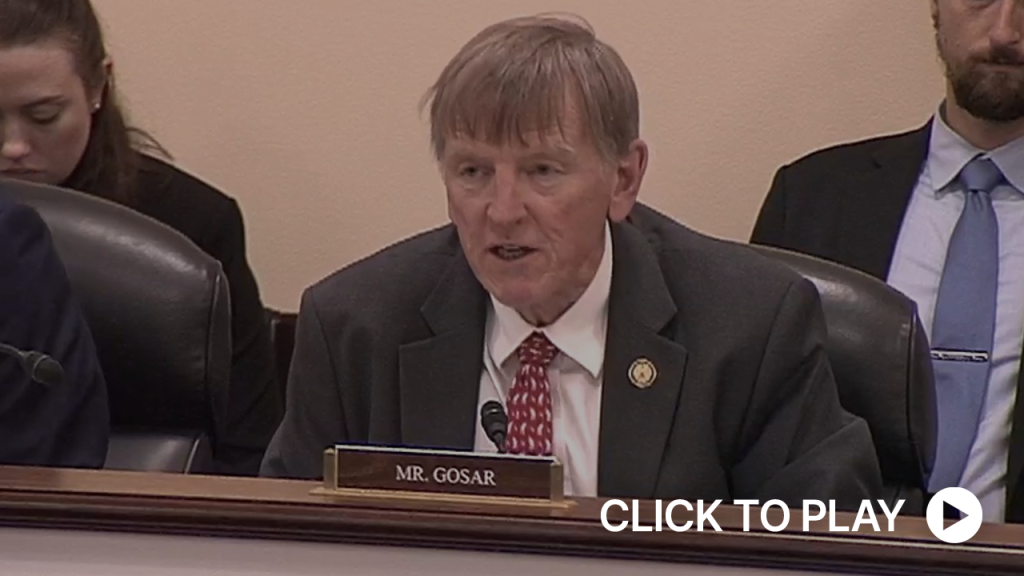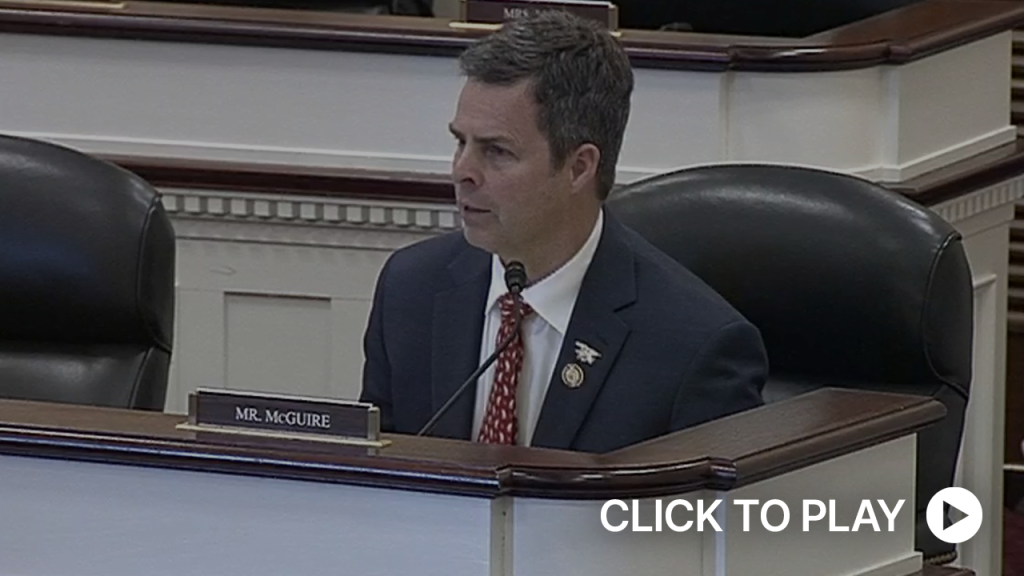
Hearing Wrap Up: Rental Assistance Programs Need Reform to Lift Americans Out of Poverty
WASHINGTON—Today, the Subcommittee on Health Care and Financial Services held a hearing on “Examining the Growth of the Welfare State, Part II.” During the hearing, members examined the high levels of waste, fraud, and abuse in the welfare system and discussed how the increasing cost of programs burdens taxpayers and keeps Americans in poverty more than it lifts them out of it. Members noted that rental assistance programs consume most of the welfare state’s budget and that these programs discourage marriage and continue the cycle of dependency on the government. Subcommittee Chairman Glenn Grothman (R-Wis.) pledged to find ways to fix rental assistance programs for both participants and taxpayers.
Key Takeaways:
The federal welfare system is bloated, discourages Americans from getting married, and dissuades Americans from lifting themselves out of poverty.
- Subcommittee Chairman Grothman noted in his opening statement, “[Our] current welfare system, including housing assistance payments, discourages marriage. It’s not hard to find people who say, ‘I can’t work more, I can’t get married, or I’ll lose my benefits.’ Due partially to these penalties, the number of children born to unmarried women has skyrocketed. In 1965, five percent of children were born to unmarried women, five percent. We’re now at 40 percent.”
- The Honorable Ben Carson Sr., MD—Former Secretary, U.S. Department of Housing and Urban Development—testified in his opening statement, “The so-called ‘marriage penalty’ embedded in assistance programs creates a tangible disincentive to family formation. For example, when two adults marry and live together, their incomes are combined to determine eligibility and rent contribution. If their combined income exceeds program limits, they may lose eligibility or face substantial rent increases. Conversely, if they remain unmarried and maintain separate residences, each may independently qualify for benefits such as separate vouchers, lower rent contributions, or continued eligibility. This financial reality causes many individuals to delay or entirely forgo marriage, undermining traditional family structures, particularly among lower-income Americans.”
The Low-Income Housing Tax Credit (LIHTC) program is expensive, prone to fraud, and should be reformed.
- Mr. Chris Edwards—Kilts Family Chair in Fiscal Studies, The Cato Institute—testified “The Housing Tax Credit, or LIHTC, as it’s often called, while well-meaning, is a complex and inefficient solution to housing affordability. The program displaces market-based housing, and part of the benefits go to developers, not tenants. A better way to reduce housing costs is tax and regulatory reforms.”
The Housing Choice Voucher (also known as “Section 8”) program is the government’s largest rental assistance program and plagued by perverse incentives, waste, fraud, abuse, and dependency.
- Mr. Howard Husock—Senior Fellow at the American Enterprise Institute—testified that “New research we are currently undertaking at AEI between myself and University of Chicago economist Bruce Meyer indicates that 87 percent of current voucher recipients, excluding the elderly and disabled, will, based on past data, likely spending more than five years in subsidized housing, including 73 percent who will spend more than 10 years.”
Member Highlights:
Subcommittee Chairman Grothman inquired about property developers and middlemen benefiting from rental assistance programs more than the average American.
Chairman Grothman: “I have a feeling whoever came up with [the LIHTC program] and lobbied Congress to begin it was not the poor people it was designed to benefit. It was the property developers. But you said that it benefits the developers and middlemen more than the average American. Could you elaborate on that a little bit? But I think it’s so true.”
Mr. Edwards: “The reason why that is, is because as the recent MIT study that I mentioned, which was a very detailed study, collected data from hundreds of LIHTC projects across 40 states [and] found that the average rent savings from LIHTC buildings, compared to nearby private market unsubsidized buildings, is only 12 percent…so the feds give $14 billion in tax credits. So where do the benefits go? A number of studies find that most of the benefits go to the developers because the system is so complex. And we know this is true because there’s a huge intense competition for that at the state and city level to get these credits by the developer.”
Subcommittee Chairman Grothman inquired about how marriage penalties exist in housing assistance programs.
Chairman Grothman: “Mr. Husock, yes, or no—are there marriage penalties in housing assistance programs, like Section 8?”
Mr. Husock: “Definitely. And it’s because of the rule, the 30 percent rule. You pay 30 percent of your income in rent, so as your income goes up, you pay higher rent. If you get married and [there are] two incomes, you pay higher rent still.”
Chairman Grothman: “Does that sometimes cause people not to get married, do you think?”
Mr. Husock: “I think, logically, it is a disincentive to marriage.”
Rep. Paul Gosar (R-Ariz.) discussed how public housing assistance has contributed to the national debt and has caused more harm than good in impoverished communities.
Rep. Gosar: “We were $36 trillion in debt, and public housing has only contributed to that cost. Section 8 housing, for example, does not have a time limit. Participants can receive subsidized housing for decades, while those most in need are stuck on a waitlist. But the housing cost crisis is not the result of one regulatory requirement, but rather a series of challenges that forced costly and unattainable standards on local communities. Not only did Biden’s HUD inflate the cost of housing welfare, but it also reinstated Obama’s ‘Affirmative Further Fair Housing Initiative,’ or the ‘AFFH’ rule. In 2015, Obama introduced the AFFH rule to dictate zoning requirements in any community across the country that applied for a community development block grant. According to the Cato Institute, Mr. Edwards, AFFH required federal and local agencies to spend $55 million each year to comply with regulations, thus increasing local taxes, reducing property values, and causing greater harm than good in impoverished communities.”
Rep. John McGuire (R-Va.) inquired about how government programs discourage work, marriage, and other behavior that may reduce the need for welfare.
Rep. McGuire: “Dr. Carson, when you arrived, did you see these bad incentives at welfare programs at the Department of Housing and Urban Development?”
Dr. Carson: “We definitely had many disincentives for self-sufficiency, and I thought, you know, coming into the department that it would be easy coming to Capitol Hill and getting bipartisan support for self-sufficiency programs and getting rid of dependency. I was wrong. There are many people who are not interested in doing that and perpetuating the situation because it gave them a power base, and I think it’s time for us, really, to sit down, put the facts in the middle of the table, and think about what [our goals are]. Our goals are not just to support people who have difficult situations, our goals are to get them out of that situation and help them to be able to realize the American Dream.”
Click here to watch the hearing.
Distribution channels: U.S. Politics
Legal Disclaimer:
EIN Presswire provides this news content "as is" without warranty of any kind. We do not accept any responsibility or liability for the accuracy, content, images, videos, licenses, completeness, legality, or reliability of the information contained in this article. If you have any complaints or copyright issues related to this article, kindly contact the author above.
Submit your press release



